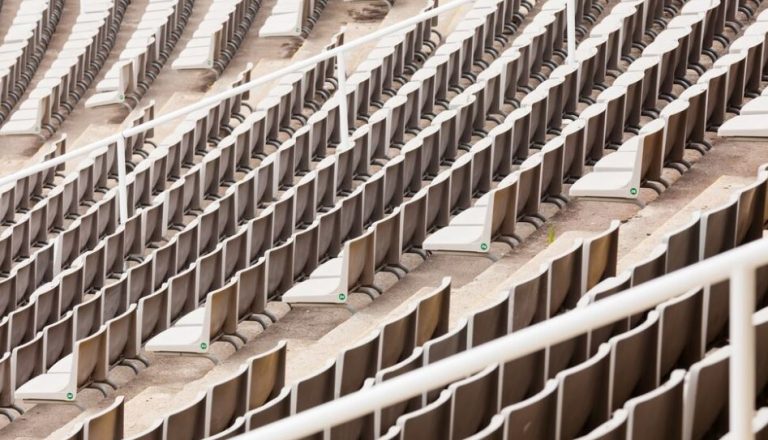Estadio La Cartuja quietly hovered on the periphery of Spanish football for decades, visible but underutilized, iconic yet strangely ambiguous. However, its narrative has changed recently. In anticipation of the FIFA World Cup in 2030, La Cartuja has made a daring change by switching from track shoes to boots. The outcome is remarkably representative of a larger shift in Spanish sports infrastructure: utility giving way to spectacle, and function meeting emotion.
The stadium has been reimagined in both form and spirit, emerging from dormancy like a phoenix after the athletics track was removed, the pitch was lowered, and 15,000 new seats were tightly wrapped around the field. This renovation is more than just concrete and acoustics for Seville. It’s a proclamation. It’s also a long-overdue invitation for fans to get more involved with the game they love.
La Cartuja Stadium Renovation – Key Project Details
| Attribute | Details |
|---|---|
| Location | Seville, Andalusia, Spain |
| Initial Opening | May 1999 |
| Renovation Period | July 2024 – April 2025 |
| Project Budget (Phase 1) | €15 million ($15.7M USD) |
| Next Phase Budget | €100 million (roof, façade, interiors) |
| New Capacity | 70,000 (up to 75,000 for concerts) |
| Main Contractor | Heliopol (Rusvel Group) |
| Architectural Lead | Cruz y Ortiz Arquitectos |
| Primary Goal | Transform into a FIFA-standard, football-focused stadium |
| Reference Source | La Cartuja – Wikipedia |
Stadiums throughout Europe had to face an existential crisis during the pandemic. A surge of investment in contemporary arenas was sparked by empty seats, dilapidated designs, and deteriorating infrastructure. Given that, the €15 million renovation of La Cartuja seems both essential and highly appropriate. The stadium now meets the immersive standards required at a World Cup stage, which is especially advantageous for Spain’s international aspirations.
I was in Seville just before the Copa del Rey final, which was one of the first events to use the newly refurbished venue, and I could feel the change right away. The roar of fans felt more like a heartbeat than noise because of the resonance produced by the stands, which were now closer to the field. It was abundantly evident that this stadium had changed since Michael Johnson’s historic sprint. In southern Spain, this was football’s new stronghold.
A strong message was conveyed by the project’s deliberate removal of the athletics track: La Cartuja would no longer serve two masters. This was not a compromise; it was a pivot. Furthermore, Andalusian sports officials defended the action as a necessary evolution, even as the Royal Spanish Athletics Federation bemoaned the defeat. José María Arrabal stated, “A venue needs to regularly host crowds of 60,000 or more in order to stay viable.” “That’s something only football can do.”
By making daring decisions, the renovation not only greatly improved the stadium’s fan experience but also prepared it for experiences of the future. While new sightlines turn passive viewing into an immersive, visceral experience, the acoustic redesign is remarkably effective at amplifying crowd energy. This design choice is eerily reminiscent of Real Sociedad’s Reale Arena, a former track stadium that has been transformed into a football-specific cauldron.
La Cartuja is also taking on a new function in La Liga as a stopover for Sevilla FC and Real Betis while their own stadiums are being renovated. Due to its dual purpose, the stadium is a vital component of Andalusia’s football ecosystem; it is incredibly adaptable and, at last, deserving of primetime.
There will soon be more improvements. The roof will be expanded, the façade will be redesigned, and the dated interiors will be replaced as part of a second renovation phase that is expected to cost €100 million. The stadium may eventually compete with the Santiago Bernabéu and Spotify Camp Nou in terms of sensory impact rather than size. Football infrastructure is advancing quickly, improving spectator experience, redefining national pride, and streamlining operations.
Spain has adopted stadium modernizations that put an emphasis on intimacy, technology, and fan-first design during the last ten years. The revival of La Cartuja is a perfect fit for this pattern. Its rapid transformation from near-abandonment to possible national focal point, however, is what makes it unique. This project’s soul lies in that arc, from silence to significance.


